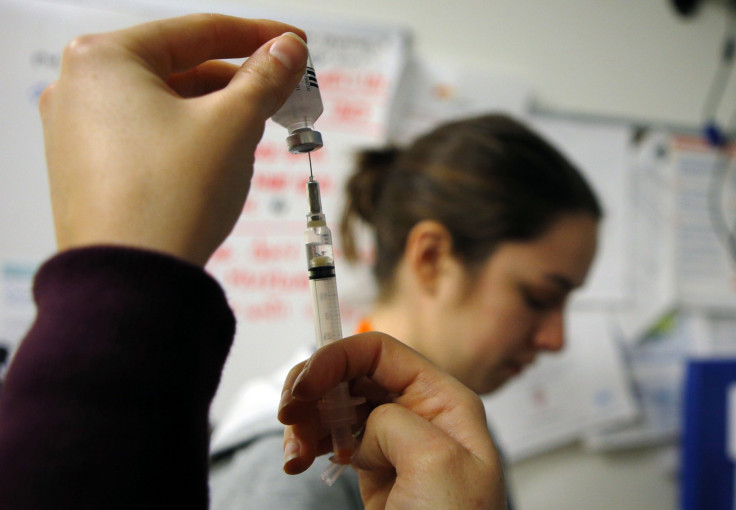Flu Season 2015: Influenza In US ‘Widespread,’ But Fear May Outpace Threat

With an unforeseen mutation in this year’s dominant influenza virus and a faulty vaccine, 43 states have seen “widespread” transmission of the flu this season, according to the latest report from the U.S. Centers for Disease Control and Prevention. Flu activity was rampant in 29 states during the final week of December, up from 22 states a week earlier. Twenty-one pediatric deaths have been reported.
The most prevalent virus of the 2014-2015 flu season has been influenza A H3N2, a particularly severe infection responsible for the three deadliest flu seasons since 2000. Health officials, however, said this year's threat was not entirely unexpected. “I don’t think it’s anything we haven’t seen before,” Richard Webby, virology expert with St. Jude Children’s Research Hospital in Memphis, Tennessee, told International Business Times. “We know H3N2 dominates a season, we know it tends to be more severe.”
Three out of four of the last 12 flu seasons reached epidemic levels, according to the Associated Press. Several so-called drift viruses – versions of H3N2 that are slightly genetically different from the main virus – have spread this season, meaning Americans have become more susceptible to the flu. “The antibodies that people made last time probably don’t work as well against [the new strain,]” Webby said. “That’s a consequence of the virus changing.”
Human influenza viruses are known to drift, or mutate, from season to season, allowing the viruses to spread through the population a little easier. At the same time, humans are constantly evolving antibodies to fight the viruses. The human immune system contains a range of antibodies that can bind to the flu virus, meaning there is a higher potential for the population to fend off viruses that are slightly unfamiliar, Webby said.
Predicting which strain of the flu will dominate a flu season involves mapping seasonal trends, field testing and, to some degree, guess work. Sometimes, the vaccine is not a good match.
Slight drifts in a dominant influenza virus are not a huge cause for concern, according to health experts. Vaccines can still provide some level of defense against the flu, even when the vaccine is not a perfect match. “It would have to be a very severe drift for a vaccine to provide no protection at all,” Webby said. Despite a mutation in the H3N2, the vaccine has averted roughly a third of the flu cases seen this season, according to the CDC.
The three types of influenza viruses are types A, B and C. Influenza viruses A and B are what cause most of the human infections, with A typically being the more severe of the two. Viruses are made up of seven segments of RNA, or genetic material. “Every so often, one of those segments gets changed very dramatically,” Patrick Schlievert, a professor and chair of microbiology at the University of Iowa, told IBTimes. “Those are the ones that usually bring in a new pandemic.”
The viruses that worry health experts the most are those “coming out of animal reservoirs,” Webby said. They are what health experts call the “pandemic strains” – viruses unfamiliar to the human immune system that suddenly jump into humans.
In 2009, a novel strain of the H1N1 influenza A virus, commonly known as swine flu, made its way to the U.S. The first cases were reported in March in California. The virus killed an estimated 10,000 Americans, including 7,500 young adults and 1,100 children, by December. Health experts estimated that more than 15 percent of the country had been infected with the virus. “If a brand new virus comes in, it’s obviously going to be more severe and effect a greater part of the population,” Schlievert said.
However, even if an unforeseen strain were to make its way into the human population, health officials are, for the most part, prepared. A hundred years of medical advances have equipped physicians with the tools to keep death rates from influenza outbreaks relatively low, Schlievert argued. If the Spanish flu pandemic of 1918, which killed upwards of 30 to 50 million people worldwide, were to happen today, “it might kill 100,000 people,” Schlievert said. “The reason is that medical care is so much better” than it was nearly a century ago, he said.
© Copyright IBTimes 2024. All rights reserved.






















